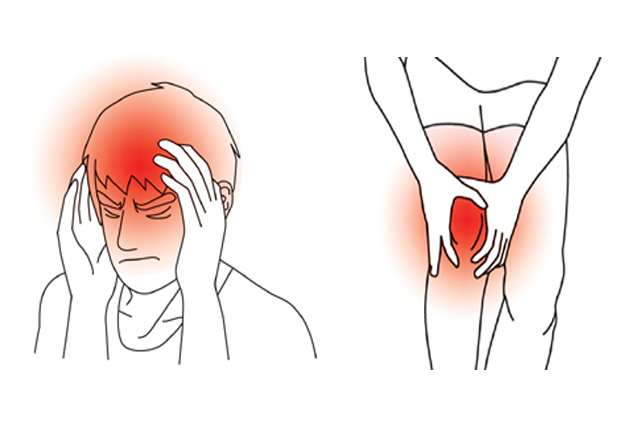
A Case Study Administering Headache and Knee Pain
By David Lee, L.Ac.
Ensuring the efficacy of acupuncture treatment requires crafting the most effective combination. As practitioners, we meticulously discern the acupuncture points that offer optimal benefits in alleviating specific ailments. Randomly chosen points won’t yield the desired results. Moreover, it’s crucial that all selected acupuncture points are optimal.
Consider the case of Natalie N., a 43-year-old patient who presented with left knee pain and swelling. Her medical history revealed a sudden onset of knee swelling a year ago, necessitating the periodic removal of 25 mL of fluid. A cortisone shot exacerbated her condition. Subsequent MRI results indicated an issue with the cartilage in her left knee, while blood tests ruled out autoimmune disease. Concurrently, Natalie experienced left hip pain that progressively worsened, accompanied by tightness in her left calf and thigh. Despite attempts at self-exercise, her symptoms persisted. Notably, Natalie had previously found some relief from headaches through acupuncture, prompting her to seek this modality again.
In Natalie’s case, determining the optimal acupuncture points for her recovery involved a comprehensive assessment of her symptoms and medical history. Through the strategic selection of acupuncture points targeting her knee, hip, and associated discomfort, Natalie experienced significant relief.
During the initial treatment, specific acupuncture points were targeted on the left side of the body, namely the Yang Horary points: LI1 (Metal), UB66 (Water), GB41 (Wood), SI5 (Fire), and ST36 (Earth), collectively known as the Metal-Order. Following this regimen, the patient reported a slight reduction in headache intensity over the subsequent two days, although the tightness in the left calf and thigh persisted without significant improvement. Recognizing the potential for alternative points to offer greater benefit, the second treatment introduced a new set of Yang Horary points: GB44 (Wood), SI2 (Fire), ST43 (Earth), LI5 (Metal), and UB40 (Water), referred to as the Wood-Order. These points were still administered on the left side of the body. Remarkably, the patient experienced a notable decrease in left knee pain immediately after the second treatment, which continued to improve leading up to the third visit four days later. Notably, she no longer required knee taping for support.
Continued application of the Wood-Order points in subsequent sessions further enhanced the patient’s mobility and reduced swelling, indicating the superiority of this point combination in addressing her specific condition. This progressive improvement underscores the importance of tailoring acupuncture treatments to individual needs and continually reassessing strategies to optimize therapeutic outcomes.
Starting from the sixth visit and continuing through the eleventh, the patient underwent bilateral acupuncture. The left side was targeted with the familiar Wood-Order points, while the right side was administered the Metal-Order points. During this phase, there was a further marginal improvement in headache symptoms, yet the left knee pain and swelling persisted with little change.
However, a pivotal shift occurred during the 12th visit when the treatment strategy transitioned exclusively to the bilateral application of the Wood-Order points. This adjustment elicited an immediate and significant alleviation of both headache and knee pain, which persisted for the subsequent seven days. By the 21st visit, the patient reported a continued remarkable enhancement in symptoms, characterized by increased stability and minimal fluctuations. Notably, the intensity, frequency, and duration of headache, knee pain, knee swelling, and hip discomfort were all reported to have improved by at least 80%.
The success observed in this case highlights the efficacy of strategic point selection in addressing complex symptomatology and promoting overall well-being.
































